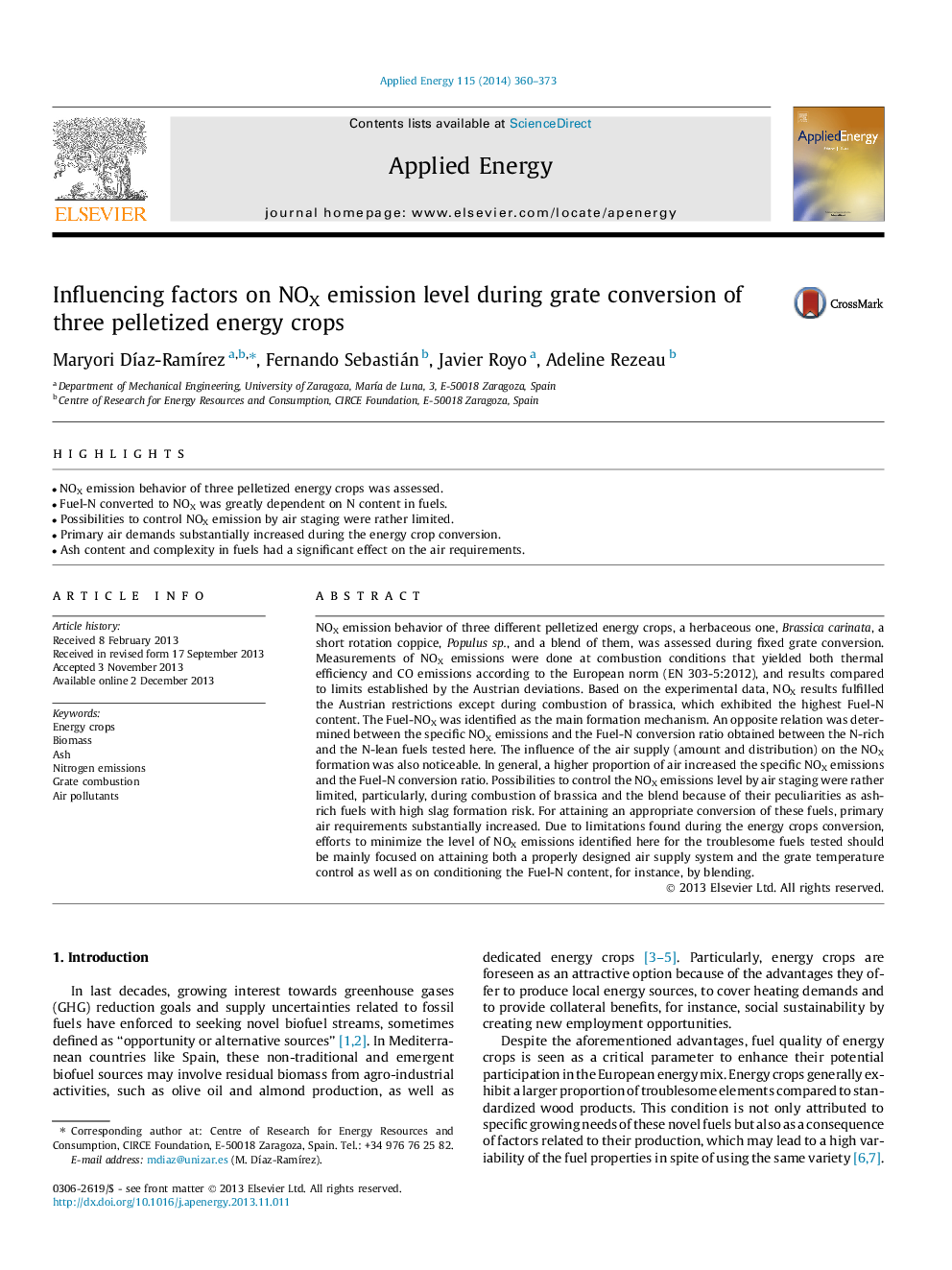| Article ID | Journal | Published Year | Pages | File Type |
|---|---|---|---|---|
| 6691415 | Applied Energy | 2014 | 14 Pages |
Abstract
NOX emission behavior of three different pelletized energy crops, a herbaceous one, Brassica carinata, a short rotation coppice, Populus sp., and a blend of them, was assessed during fixed grate conversion. Measurements of NOX emissions were done at combustion conditions that yielded both thermal efficiency and CO emissions according to the European norm (EN 303-5:2012), and results compared to limits established by the Austrian deviations. Based on the experimental data, NOX results fulfilled the Austrian restrictions except during combustion of brassica, which exhibited the highest Fuel-N content. The Fuel-NOX was identified as the main formation mechanism. An opposite relation was determined between the specific NOX emissions and the Fuel-N conversion ratio obtained between the N-rich and the N-lean fuels tested here. The influence of the air supply (amount and distribution) on the NOX formation was also noticeable. In general, a higher proportion of air increased the specific NOX emissions and the Fuel-N conversion ratio. Possibilities to control the NOX emissions level by air staging were rather limited, particularly, during combustion of brassica and the blend because of their peculiarities as ash-rich fuels with high slag formation risk. For attaining an appropriate conversion of these fuels, primary air requirements substantially increased. Due to limitations found during the energy crops conversion, efforts to minimize the level of NOX emissions identified here for the troublesome fuels tested should be mainly focused on attaining both a properly designed air supply system and the grate temperature control as well as on conditioning the Fuel-N content, for instance, by blending.
Related Topics
Physical Sciences and Engineering
Energy
Energy Engineering and Power Technology
Authors
Maryori DÃaz-RamÃrez, Fernando Sebastián, Javier Royo, Adeline Rezeau,
